Five Ways to Generate More Leads Through Video Marketing
Discover five proven strategies to boost lead generation with video marketing. Engage your audience and drive results with actionable insights!
Introduction
In this digital age, video marketing has become an indispensable tool for businesses looking to capture attention, engage audiences, and convert interest into action.
As per Wyzowl, only 91% of B2B businesses use video content as a marketing tool that will support your brand. Therefore, whether you are in an e-commerce or healthcare business, online videos can be considered one of the most powerful lead-generation tools. While popular video content drives maximum engagement, it often drives concrete outcomes, and the marketing and sales teams face issues in converting those video viewers into actionable leads.
So if you are among those who struggle to turn your video marketing efforts into a lead-generation powerhouse, we are here to guide you through.
Table of contents
1. The Struggle to Generate High-quality Leads with Video Marketing
1.1. Lack of Clear Goals
1.2. Poorly Defined Target Audience
1.3. Poor Quality Videos
2. Top Five Strategies that Work in Video Marketing
2.1. Educational Webinars
2.2. Customer Testimonials
2.3. Animated Explainers
2.4. Retargeting with Video Ads
2.5. Collaborations and Partnerships
Conclusion
1. The Struggle to Generate High-quality Leads with Video Marketing
We are aware of the power of video marketing, but it’s not without its challenges. Many marketers and sales professionals often struggle to convert videos into leads or customers.
Let’s understand the common hurdles that you might face:
1.1 Lack of Clear Goals
Marketers and sales professionals often proceed without any clear goals and create video marketing efforts that are ineffective and aimless. B2B businesses often create content for the sake of having videos without a strategic plan for how those videos will generate leads.
1.2 Poorly Defined Target Audience
Businesses often don’t understand who they are trying to reach, as their content may not resonate with potential leads. Therefore, having a well-defined target audience and creating videos that will appeal to this group is crucial.
1.3 Poor Quality Videos
In the digital world, high-quality video content is aiding in generating good leads; therefore, businesses need to invest in good-quality equipment or hire professionals to ensure their videos look more polished and professional.
2. Top Five Strategies that Work in Video Marketing
Although implementing video marketing can be challenging, you can successfully generate leads to grow your customer base with the strategies below.
2.1 Educational Webinars
The educational videos are great for organizations that are trying to build authority in their field. With these in-depth video sessions, explore topics that resonate with your viewers, granting them valuable insights and knowledge. Therefore, when you provide free and top-notch content, you tend to attract potential customers and build trust within your community. A successful webinar doesn’t just stem from talking about what the company offers, but it provides solutions to all challenges faced by your audience with handy tips and tactics or unique insights.
2.2 Customer Testimonials
Video marketing speaks louder if you provide authentic customer testimonials, as these are concrete evidence of your product’s effectiveness that will aid in building trust among potential clients and strike a deeper chord than conventional adverts. Featuring clients that mirror your core audience and letting them recount their experience candidly. Also, illustrate the change your product and services made and how it addressed problems or facilitated a client’s objective.
2.3 Animated Explainers
Animated explainer videos are often considered funny avenues that explain intricate ideas or themes. Through animations and compelling narratives, these explainer videos communicate your core message to ensure it is both digestible and memorable for viewers. Firstly, start pinpointing the central theme or message you aim to relay, then focus on writing a clear script with a concise narrative. Lastly, prioritize straightforward language and bypass industry jargon to ensure broad accessibility. Once your script is ready, collaborate with an animation expert to animate your vision.
2.4 Retargeting with Video Ads
Video ad retargeting is an effective way to reconnect with users’ previous engagement with your brands and products. This approach ensures that your brand is presented again, especially to those who navigate your website, interact with your application, or engage with your digital content. However, the timing in retargeting is as vital as the content itself. Therefore, you should aim to capture users when their intent is highest, especially during this holiday season when they are browsing your site or leaving items in their cart.
2.5 Collaborations and Partnerships
Lastly, teaming up with other brands, prominent figures, or experts in your field can extremely strengthen your video marketing efforts. These partnerships can expand your reach, boost your reputation, and introduce a refreshing variety of content to your followers. However, before selecting any collaborator, it is wise to find someone who caters to a similar audience but offers a distinct product or service; this ensures that both parties benefit while sidestepping direct competition. Create content around webinars, interview each other in a video podcast, or create a joint product demonstration that will promote more collaboration across all your marketing channels to maximize reach.
Conclusion
With the increasing demand for video content from consumers, video marketing can be a powerful tool that increases sales and generates leads. The benefits of video marketing are not just limited to building a strong online presence but also aid in better SEO ranking. Therefore, using the above strategies, you can start growing your audience and nurturing them into qualified leads. And with the right approach, you will soon start seeing results.
Visit Our SalesMarkBlog Section to Uncover the Sales Strategies That Ignite Your Sales Journey!



